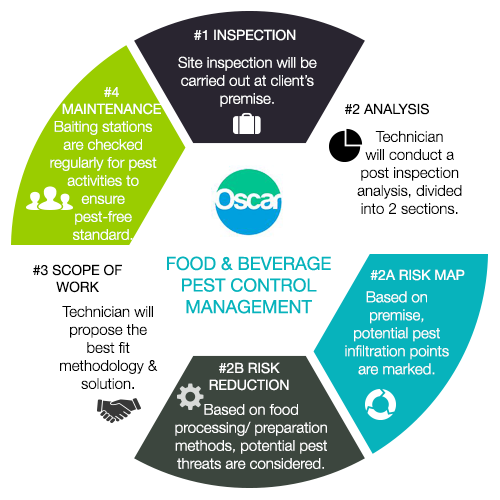The Role Of Bug Exterminators In Environmental Sustainability
The Role Of Bug Exterminators In Environmental Sustainability
Blog Article
Content Writer-Gregory Mcmahon
You may think that parasite exterminators are just concerned with removing bugs, but their role goes beyond that. They play a crucial component in ecological sustainability.
By utilizing integrated insect management methods, they not only eliminate parasites but likewise protect biodiversity.
Furthermore, they utilize lasting bug extermination methods to alleviate ecological risks.
So, next time you question the importance of bug exterminators, remember their payment to a greener and healthier planet.
The Significance of Integrated Pest Administration
You ought to recognize the value of integrated parasite administration in keeping a sustainable environment.
Integrated Insect Administration (IPM) is a technique that focuses on stopping and regulating insects while lessening making use of unsafe chemicals. By implementing IPM approaches, you can efficiently manage parasite populations without causing injury to the environment.
One essential facet of IPM is the use of organic controls, such as predators and bloodsuckers, to naturally manage pest populations. This lowers the demand for chemical pesticides, which can have damaging results on wild animals and ecosystems.
Additionally, IPM advertises using social and physical controls, such as plant turning and exclusion techniques, to stop bugs from coming to be an issue to begin with.
Shielding Biodiversity Via Bug Control
We can protect biodiversity with efficient pest control methods that focus on the preservation of all-natural ecological communities. By employing responsible pest control practices, we can secure and keep the fragile balance of types within our atmosphere. Here are 3 ways in which parasite control contributes to safeguarding biodiversity:
- ** Preserving native vegetation and fauna ** - By targeting intrusive varieties that threaten native plants and animals, insect control assists make sure the survival of native types and keeps the all-natural diversity of ecosystems.
- ** Preventing the spread of diseases ** - Controlling insects such as mosquitoes and ticks reduces the danger of diseases infecting wild animals populaces, shielding biodiversity and avoiding potential outbreaks.
- ** Saving threatened varieties ** - By taking care of pests that prey on or take on threatened varieties, insect control initiatives can boost the opportunities of survival and promote the healing of at risk populaces.
With more information , we can proactively add to the preservation of biodiversity and the sustainability of our natural world.
Mitigating Environmental Threats With Sustainable Bug Extermination Methods
By using lasting bug extermination approaches, you can successfully reduce ecological dangers while making sure the security and health of both people and the natural ecological community. Conventional parasite control approaches usually entail the use of hazardous chemicals that can have harmful impacts on the setting.
Nonetheless, lasting how to get rid of rats concentrate on reducing these threats by making use of eco-friendly options. As an example, incorporated bug administration (IPM) strategies prioritize the use of non-toxic and biodegradable items, as well as all-natural predators to control pest populations. This approach not only lowers the negative impact on the environment yet also aids to maintain the fragile balance of the community.
Furthermore, lasting insect elimination methods promote the preservation of biodiversity by targeting details bugs without damaging advantageous organisms. By embracing these methods, you can add to a more lasting and green approach to pest control.
Verdict
You are the pest exterminator, the guardian of nature's consistency. With incorporated insect monitoring, you stabilize the fragile ecosystem, making sure the survival of varied varieties.
Through lasting methods, you minimize environmental dangers, keeping the delicate equilibrium undamaged.
Like a symphony conductor, you manage the rhythm and circulation, safeguarding the biodiversity that dancings in best consistency.
With every step you take, you produce a globe where nature grows, where parasites pull back, and where sustainability reigns supreme.
